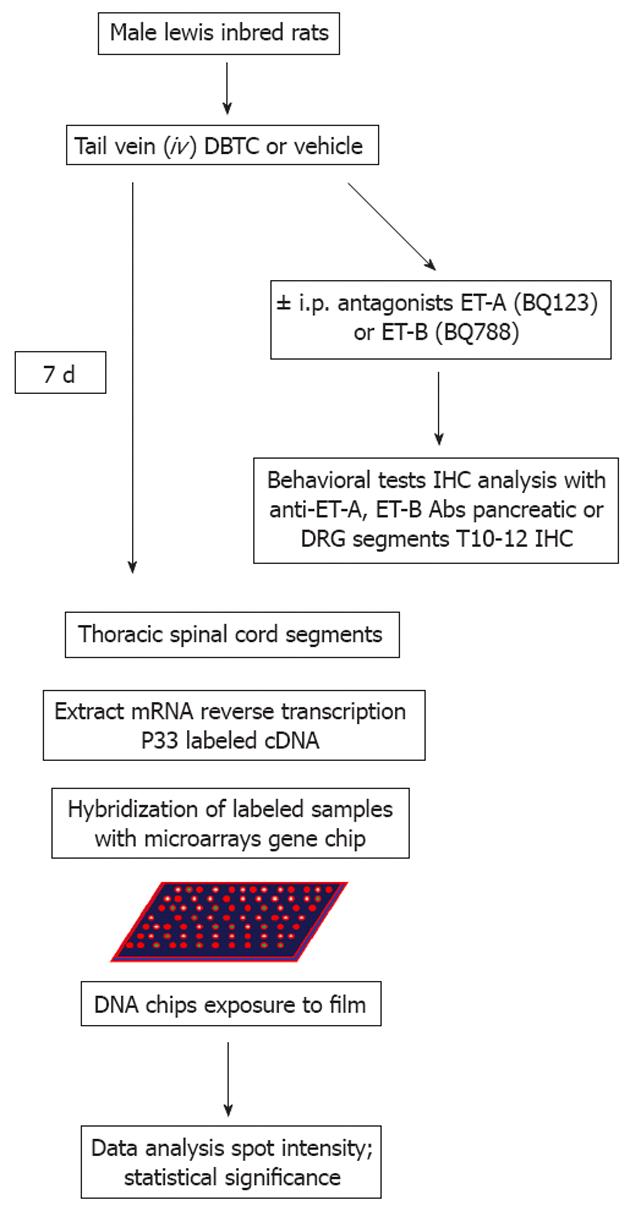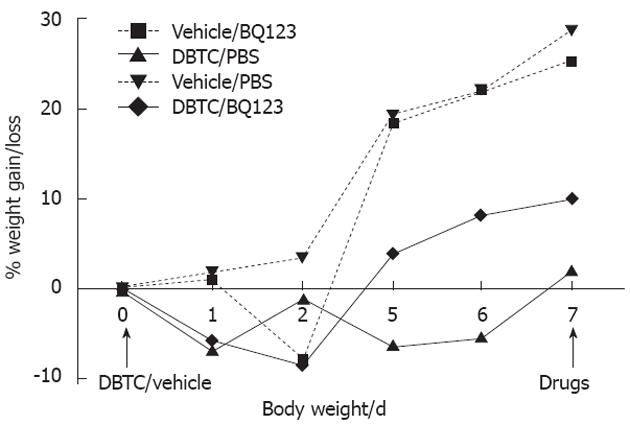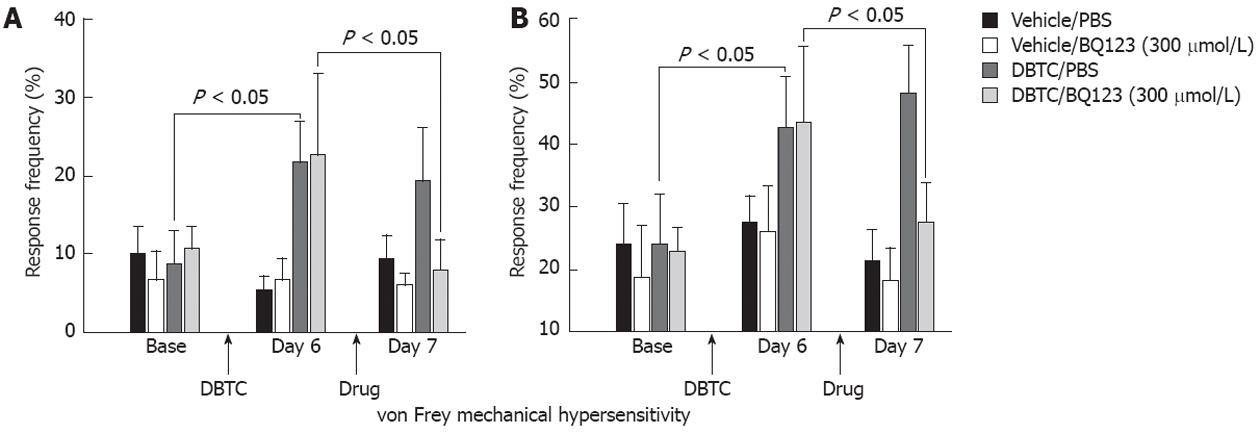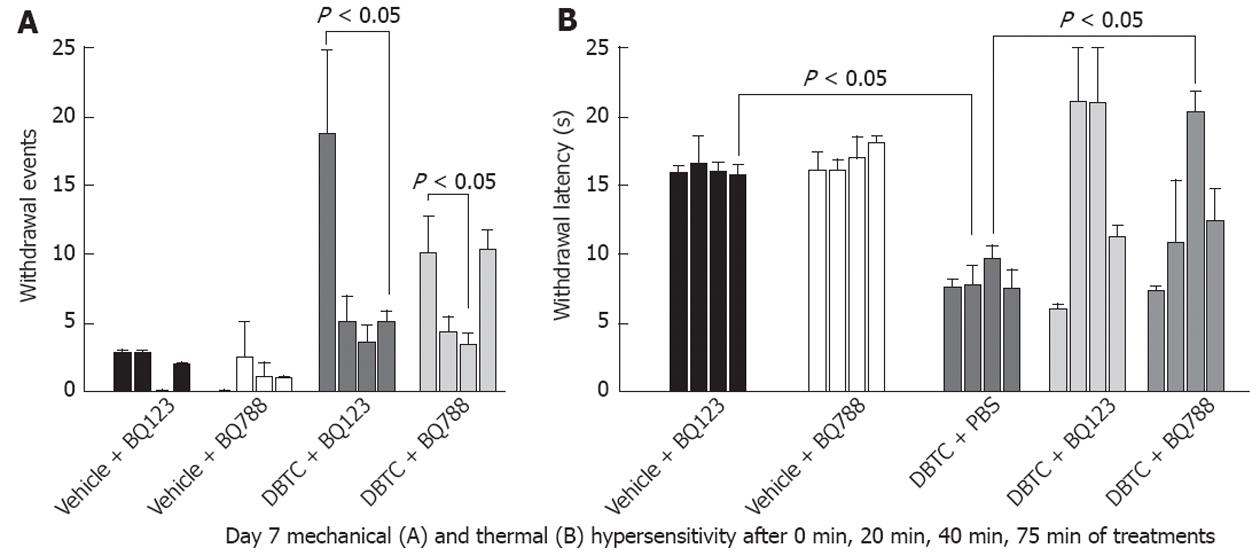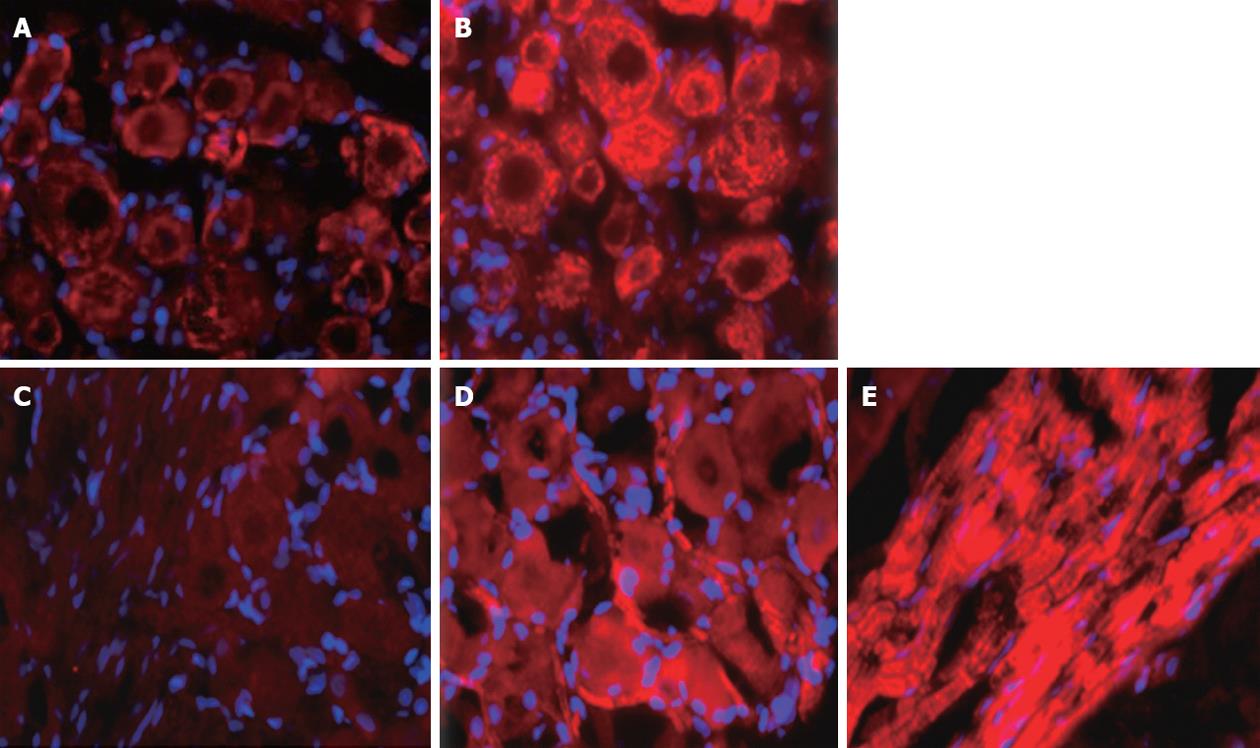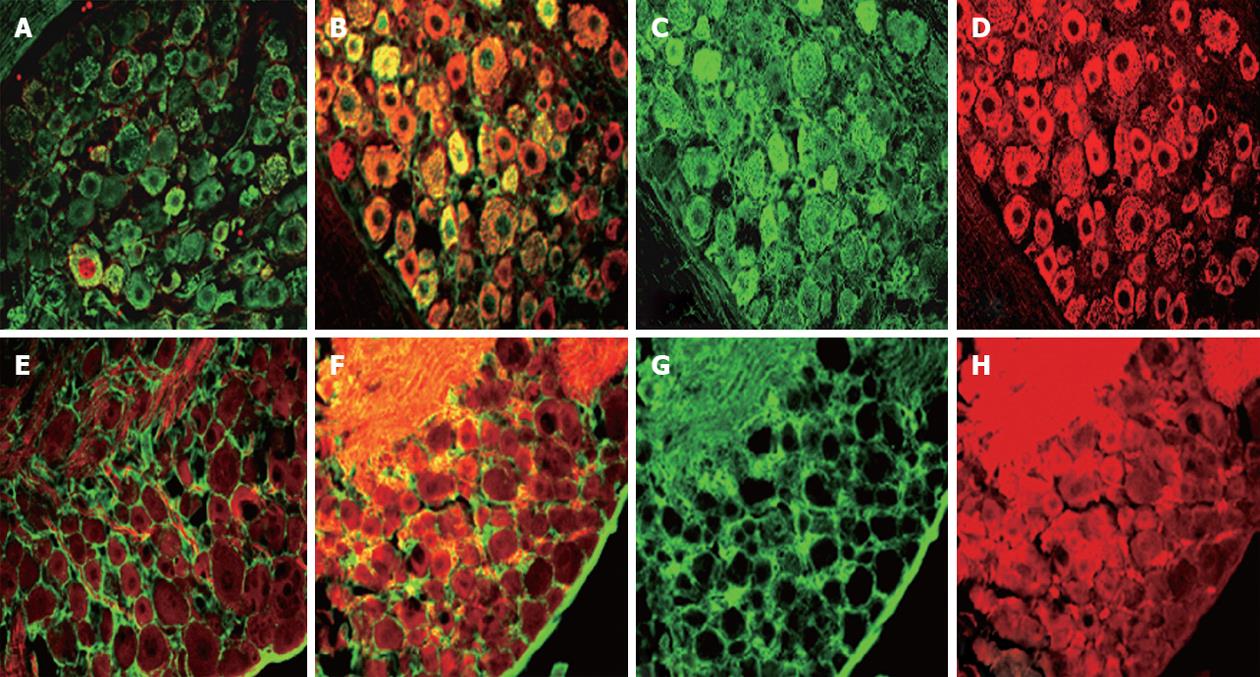Copyright
©2012 Baishideng Publishing Group Co.
World J Gastroenterol. Aug 28, 2012; 18(32): 4257-4269
Published online Aug 28, 2012. doi: 10.3748/wjg.v18.i32.4257
Published online Aug 28, 2012. doi: 10.3748/wjg.v18.i32.4257
Figure 1 Schematic drawing of the study design.
DBTC: Dibutyltin dichloride; DRG: Dorsal root ganglia. ET: Endothelin; IHC: Immunohistochemistry.
Figure 2 Timeline demonstrates % body weight gain/loss in rats during the study comparing naive rats and rats with pancreatitis (n = 5).
DBTC: Dibutyltin dichloride; PBS: Phosphate buffered saline.
Figure 3 Behavioral responses to mechanical stimuli using 2 von Frey microfilaments of different strengths (g-Force).
A: 3.52 mN; B: 10.78 mN, at baseline and on day 6 (dibutyltin dichloride-induced pancreatitis) and day 7 (drug treatment). BQ123 (300 μmol/L) abolishes abdominal hypersensitivity 75 min post treatment with no effect in naïve animals (n = 5). PBS: Phosphate buffered saline; DBTC: Dibutyltin dichloride.
Figure 4 Response to von Frey monofilaments for rats at baseline, after induction of pancreatitis with dibutyltin dichloride which promotes mechanical hypersensitivity (day 6), and responses 75 min (day 7) after the three doses of BQ123 (n = 5).
DBTC: Dibutyltin dichloride.
Figure 5 Mechanical and thermal hypersensitivity.
A: Rats with pancreatitis demonstrate fewer withdrawal events in response to mechanical stimuli at time points after treatment with BQ123 [endothelin (ET)-A receptor antagonist, 300 μmol/L] and BQ788 (ET-B receptor antagonist, 300 μmol/L). The response to BQ788 persisted for a shortened amount of time compared to the longer lasting to BQ123. Data is presented as actual number of events (n = 5); B: Endothelin-A receptor antagonist (BQ123) normalized secondary thermal hypersensitivity that was shortened after induction of pancreatitis. The effect persisted longer for BQ123 compared to shorter response to BQ788 antagonist (n = 5). PBS: Phosphate buffered saline; DBTC: Dibutyltin dichloride.
Figure 6 Pancreatic tissues from naïve and pancreatitic animals.
A: Naïve endothelin (ET)-AR; B: Dibutyltin dichloride (DBTC) ET-A receptor; C: Naïve ET-B receptor; D: DBTC ET-B receptor. ET-A receptors are expressed in ducts (arrows) which appear more constricted in pancreatitis animals (B: DBTC ET-A receptor). ET-B receptors were expressed on the vasculature (4’,6-diamidino-2-phenylindole, nuclear blue counterstaining) 40× magnification (n = 5).
Figure 7 Immunohistochemical analysis of the localization of endothelin-A and endothelin-B receptors in dorsal root ganglia from naïve or pancreatitic rats.
A: Naïve endothelin (ET)-A; B: Dibutyltin dichloride (DBTC) ET-A; C: Naïve ET-B; D, E: DBTC ET-B (n = 5). ET-A receptor expression is shown in primary sensory neurons (A, B). In contrast, ET-B receptors (B-E) are primarily localized on the Schwann cells (myelin sheaths) surrounding the axons passing through the dorsal root ganglia from naïve or pancreatitic rats (4’,6-diamidino-2-phenylindole nuclear blue staining and Alexa Fluor 568, red).
Figure 8 Endothelin receptor A and B in dorsal root ganglia (T10-12).
A: Double staining of Endothelin receptor A with dual staining for neuronal (NeuN) and glial fibrillary acidic (GFAP) markers from naïve animal; B: Dual staining for Endothelin A and NeuN in a pancreatitic animal; C: NeuN in a pancreatitic animal; D: Endothelin receptor A in a pancreatitic animal. Significant increases in the endothelin (ET)-A are noted in dorsal root ganglia (DRG) neurons of all sizes on day 7 after induction of pancreatitis; E: Dual staining for Endothelin B and GFAP in a naïve animal; F: Dual staining for Endothelin B and GFAP in a pancreatitic animal; G: GFAP in a pancreatitic animal; H: Endothelin receptor B in a pancreatitic animal; Significant increases in the ET-B receptor are noted localized in satellite glia and Schwann cell myelin in thoracic DRG on day 7 after induction of pancreatitis. Alexa Fluor 568, red; Alexa Fluor 488, green (n = 5).
- Citation: Oz HS, Lu Y, Vera-Portocarrero LP, Ge P, Silos-Santiago A, Westlund KN. Gene expression profiling and endothelin in acute experimental pancreatitis. World J Gastroenterol 2012; 18(32): 4257-4269
- URL: https://www.wjgnet.com/1007-9327/full/v18/i32/4257.htm
- DOI: https://dx.doi.org/10.3748/wjg.v18.i32.4257









